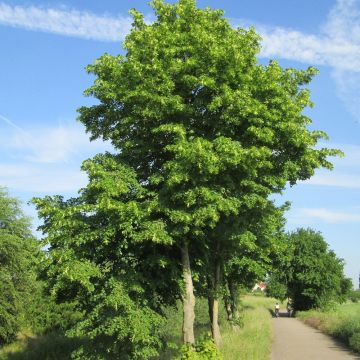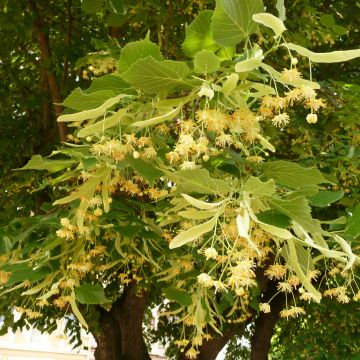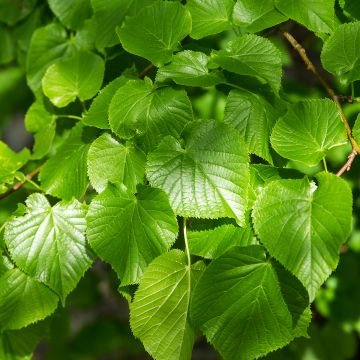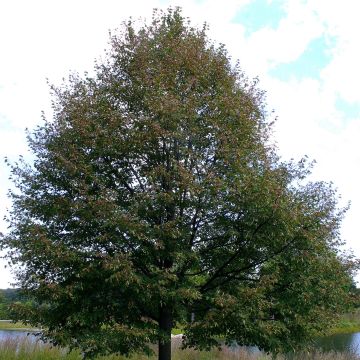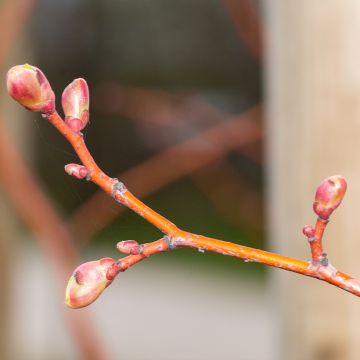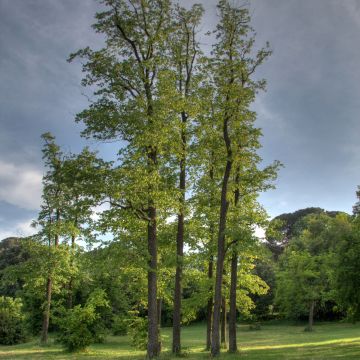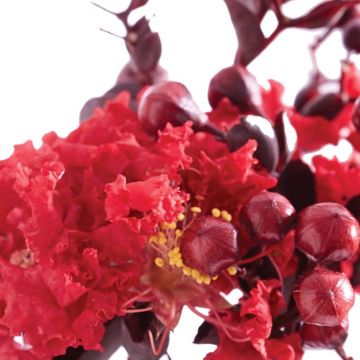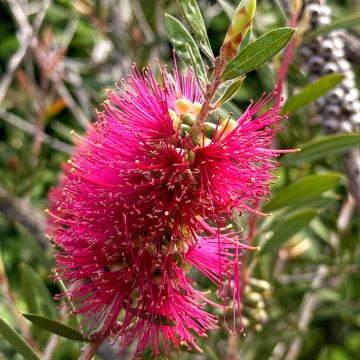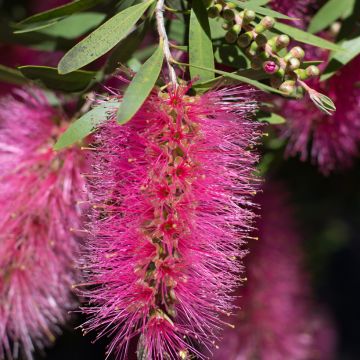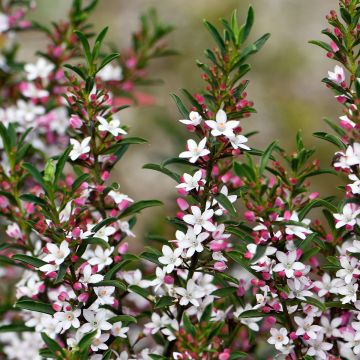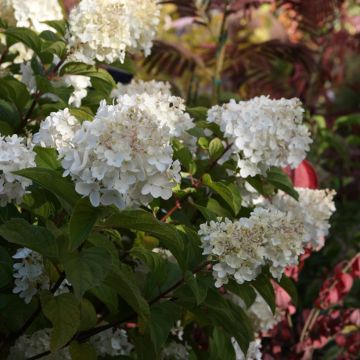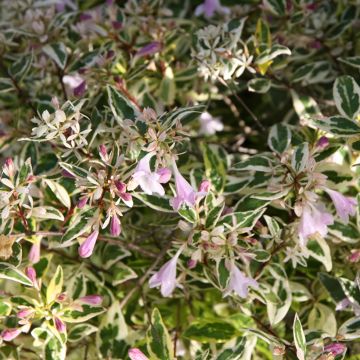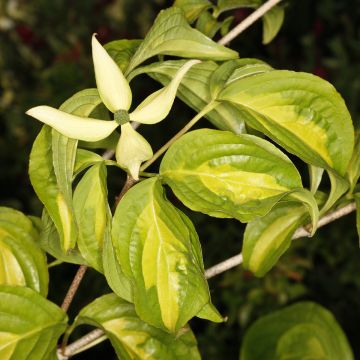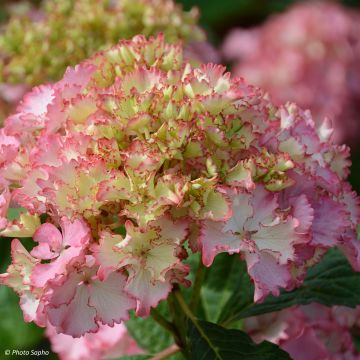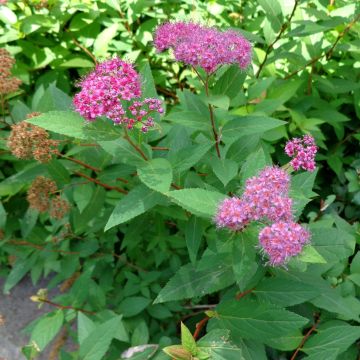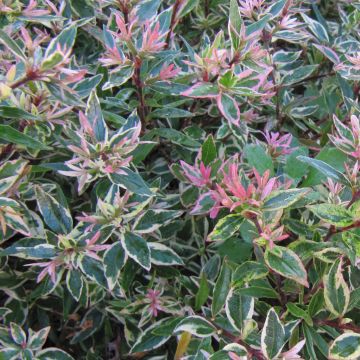Shipping country and language
Your country of residence may be:
Your country of residence is:
For a better user experience on our website, you can select:
Your shipping country:
-
Andorra
-
Austria
-
Belgium
-
Bulgaria
-
Canada
-
Chile
-
Croatia
-
Cyprus
-
Czechia
-
Denmark
-
Estonia
-
Finland
-
France
-
Germany
-
Greece
-
Hungary
-
Iceland
-
Ireland
-
Italy
-
Latvia
-
Lithuania
-
Luxembourg
-
Malta
-
Monaco
-
Netherlands
-
Poland
-
Portugal
-
Romania
-
Slovakia
-
Slovenia
-
Spain
-
Sweden
-
Switzerland
-
United Kingdom
We only deliver seed and bulb products to your country. If you add other products to your basket, they cannot be shipped.
Language:
-
French
-
German
-
Spanish
-
English
-
Italian
My Account
Hello
My wish lists
Log in / Register
Existing customer?
New customer?
Create an account to track your orders, access our customer service and, if you wish, make the most of our upcoming offers.
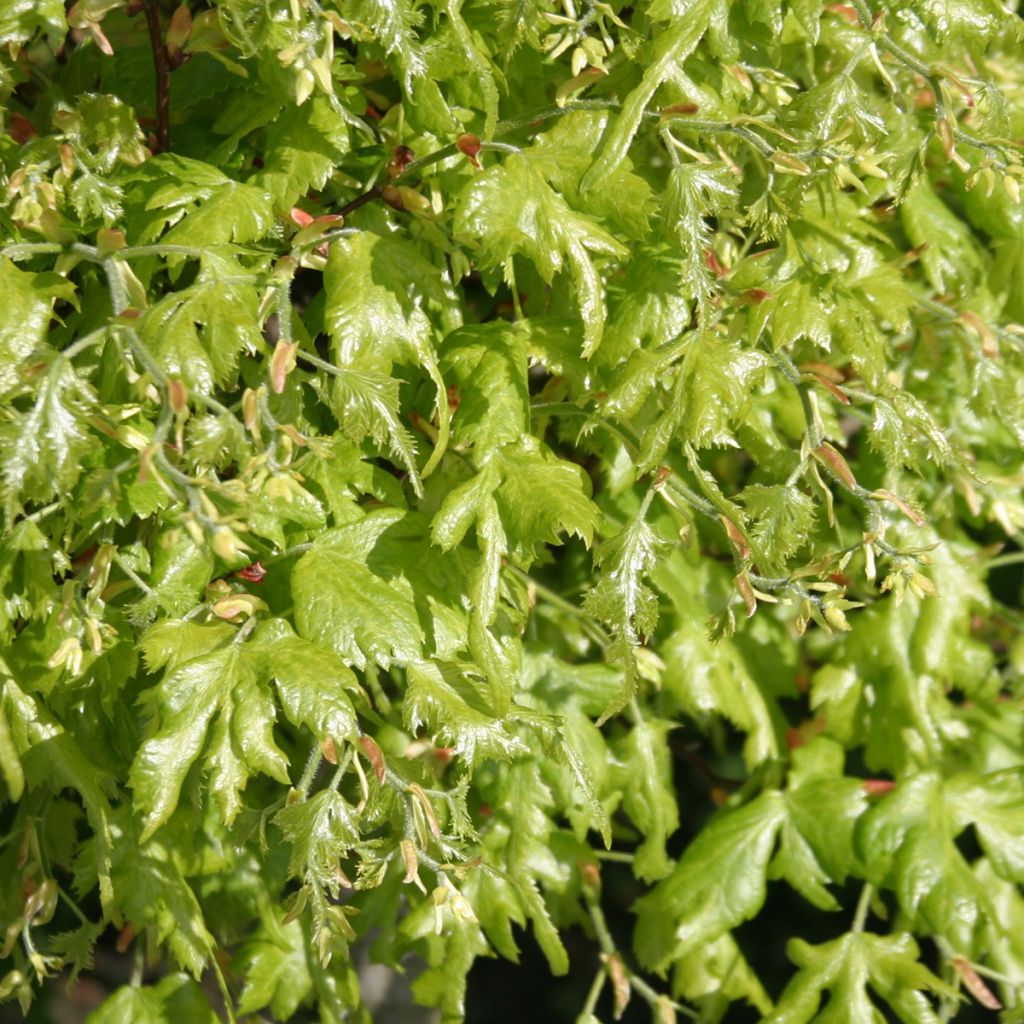

Tilia platyphyllos Laciniata - Lime
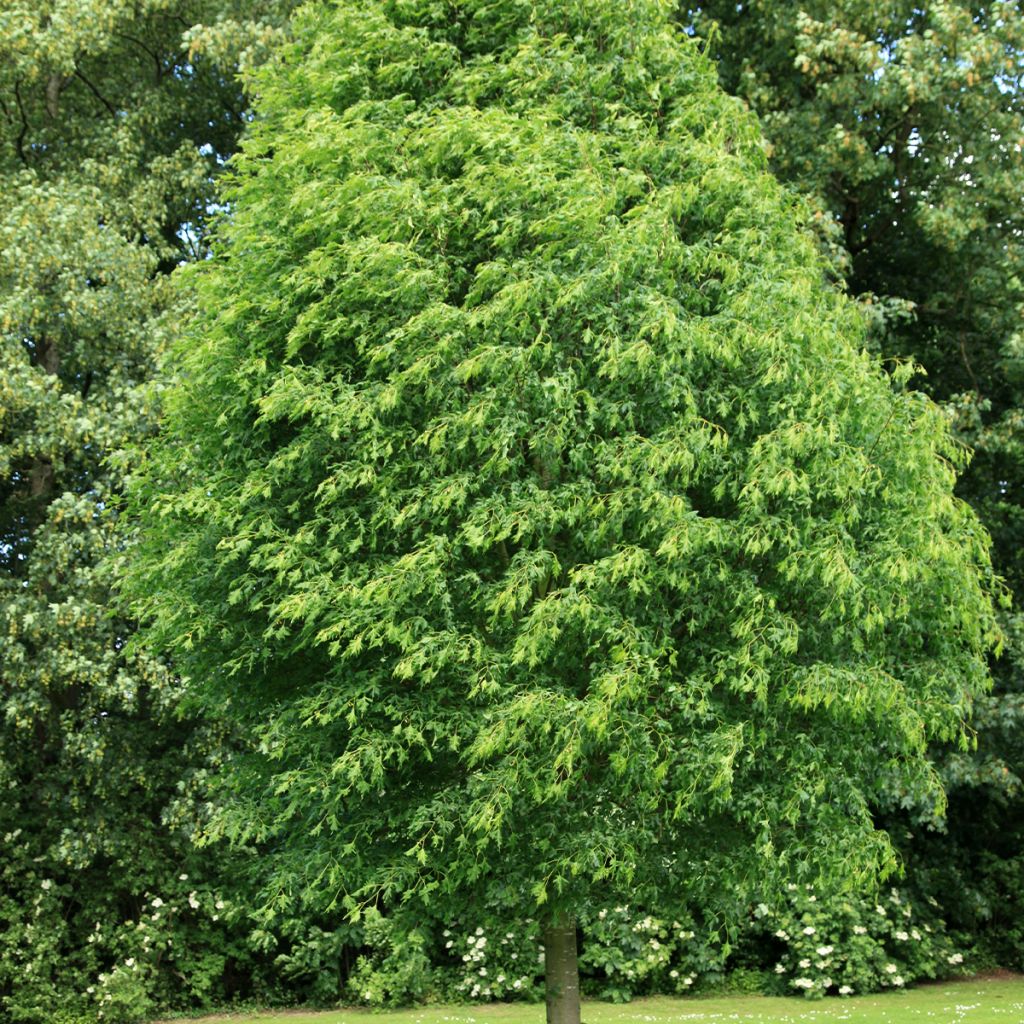

Tilia platyphyllos Laciniata - Lime
Tilia platyphyllos Laciniata - Lime
Tilia platyphyllos Laciniata
Large-leaved Lime, Large-leaved Linden, Broad-leaved Lime
Why not try an alternative variety in stock?
View all →Order in the next for dispatch today!
Dispatch by letter from €3.90.
Delivery charge from €5.90 Oversize package delivery charge from €6.90.
Current delivery delay: 2 days.
More information
This item is not available in your country.
Schedule delivery date,
and select date in basket
This plant carries a 24 months recovery warranty
More information
We guarantee the quality of our plants for a full growing cycle, and will replace at our expense any plant that fails to recover under normal climatic and planting conditions.
From €5.90 for pickup delivery and €6.90 for home delivery
Express home delivery from €8.90.
Does this plant fit my garden?
Set up your Plantfit profile →
Description
The Tilia platyphyllos 'Laciniata' is a selection of the lime tree that stands out for its laciniate foliage, which is original. This form is also characterised by slow growth and slightly less development. Its summer flowering is abundant, fragrant, and melliferous. Its foliage, which turns yellow in autumn, is an additional asset, as is the beautiful grey bark that cracks as it ages. This deciduous tree is easy to grow in ordinary soil that remains moist in summer.
The Tilia platyphyllos belongs to the Tiliaceae family. Quite rare in its natural state, this lime tree is native to Western Europe and present in France, particularly in high-altitude forests and gorges in the east of our territory. This species is absent from the Mediterranean region. Its growth is quite slow, and in good conditions, it can reach a height of 35 m and a width of 22 m (72ft). In cultivation, it reaches a height of 20 m (66ft) with a spread of 10-15 m (33-49ft). This lime tree can live up to 1000 years. Also known as the Dutch lime tree, it is a majestic deciduous tree, often planted as a shade tree in parks or rows along avenues.
The Tilia platyphyllos 'Laciniata' has a broad pyramidal habit, with a semi-open crown atop a rather massive trunk. The young branches are fuzzy, reddish-brown, punctuated with elongated light lenticels. They become more gray over time. The leaves are alternate, 8 to 15 cm (3 to 6in) long, with irregular lobes bordered by small teeth. Reddish in the bud and fuzzy, they turn a bright green colour on the upper surface in summer, showing a fuzzy underside and yellowish hairs at the angle of the veins. In autumn, they turn golden yellow. The abundant flowering usually takes place in June. The small flowers are pale yellow with lime green stamens, arranged in pendant corymbs of 2 to 5, attached to the branches by long petioles. Remarkably fragrant and rich in nectar, they delight bees and herbal tea enthusiasts. They are followed by small rounded fruits with 5 prominent ribs attached to a wing called a samara, initially green and then turning grey.
The Dutch lime tree 'Laciniata' will be planted by a collector of rare trees for posterity in a garden large enough to accommodate it. It can be planted as a solitary shade tree or in rows along a long avenue. If you have enough space, place two specimens at the entrance of the garden to frame a beautiful gate. You can pair it with other trees or shrubs such as Parrotia, Caramel tree, winged spindle (Euonymus alatus), and let a Virginia creeper climb on them to create a vibrant grove from September to November. Its flowers are an important source of nectar, valuable for beekeepers. A Japanese medlar, flowering in October-November with a scent of bitter almond, a black locust, and the Honey Tree (Tetradium danielli), flowering from June to August, can also play this vital role if you have a beehive in your garden.
Report an error about the product description
Plant habit
Flowering
Foliage
Botanical data
Tilia
platyphyllos
Laciniata
Tiliaceae
Large-leaved Lime, Large-leaved Linden, Broad-leaved Lime
Cultivar or hybrid
Other Tilia - Linden
Planting and care
The 'Laciniata' Large-leaved Lime is preferably planted in autumn or early spring. It tolerates cold weather well and is fairly wind resistant but not salt spray. It requires a sunny exposure, or at most, partial shade. It adapts well to limestone and acidic soils, although not too poor. It should be avoided in excessively wet or dry soils. Regular, deep, fertile, and moist soil will ensure optimal growth. In the first few years, it is recommended to prune the lower branches to allow for easy access under the tree.
Planting period
Intended location
Care
This item has not been reviewed yet - be the first to leave a review about it.
Summer-flowering shrubs
Haven't found what you were looking for?
Hardiness is the lowest winter temperature a plant can endure without suffering serious damage or even dying. However, hardiness is affected by location (a sheltered area, such as a patio), protection (winter cover) and soil type (hardiness is improved by well-drained soil).

Photo Sharing Terms & Conditions
In order to encourage gardeners to interact and share their experiences, Promesse de fleurs offers various media enabling content to be uploaded onto its Site - in particular via the ‘Photo sharing’ module.
The User agrees to refrain from:
- Posting any content that is illegal, prejudicial, insulting, racist, inciteful to hatred, revisionist, contrary to public decency, that infringes on privacy or on the privacy rights of third parties, in particular the publicity rights of persons and goods, intellectual property rights, or the right to privacy.
- Submitting content on behalf of a third party;
- Impersonate the identity of a third party and/or publish any personal information about a third party;
In general, the User undertakes to refrain from any unethical behaviour.
All Content (in particular text, comments, files, images, photos, videos, creative works, etc.), which may be subject to property or intellectual property rights, image or other private rights, shall remain the property of the User, subject to the limited rights granted by the terms of the licence granted by Promesse de fleurs as stated below. Users are at liberty to publish or not to publish such Content on the Site, notably via the ‘Photo Sharing’ facility, and accept that this Content shall be made public and freely accessible, notably on the Internet.
Users further acknowledge, undertake to have ,and guarantee that they hold all necessary rights and permissions to publish such material on the Site, in particular with regard to the legislation in force pertaining to any privacy, property, intellectual property, image, or contractual rights, or rights of any other nature. By publishing such Content on the Site, Users acknowledge accepting full liability as publishers of the Content within the meaning of the law, and grant Promesse de fleurs, free of charge, an inclusive, worldwide licence for the said Content for the entire duration of its publication, including all reproduction, representation, up/downloading, displaying, performing, transmission, and storage rights.
Users also grant permission for their name to be linked to the Content and accept that this link may not always be made available.
By engaging in posting material, Users consent to their Content becoming automatically accessible on the Internet, in particular on other sites and/or blogs and/or web pages of the Promesse de fleurs site, including in particular social pages and the Promesse de fleurs catalogue.
Users may secure the removal of entrusted content free of charge by issuing a simple request via our contact form.
The flowering period indicated on our website applies to countries and regions located in USDA zone 8 (France, the United Kingdom, Ireland, the Netherlands, etc.)
It will vary according to where you live:
- In zones 9 to 10 (Italy, Spain, Greece, etc.), flowering will occur about 2 to 4 weeks earlier.
- In zones 6 to 7 (Germany, Poland, Slovenia, and lower mountainous regions), flowering will be delayed by 2 to 3 weeks.
- In zone 5 (Central Europe, Scandinavia), blooming will be delayed by 3 to 5 weeks.
In temperate climates, pruning of spring-flowering shrubs (forsythia, spireas, etc.) should be done just after flowering.
Pruning of summer-flowering shrubs (Indian Lilac, Perovskia, etc.) can be done in winter or spring.
In cold regions as well as with frost-sensitive plants, avoid pruning too early when severe frosts may still occur.
The planting period indicated on our website applies to countries and regions located in USDA zone 8 (France, United Kingdom, Ireland, Netherlands).
It will vary according to where you live:
- In Mediterranean zones (Marseille, Madrid, Milan, etc.), autumn and winter are the best planting periods.
- In continental zones (Strasbourg, Munich, Vienna, etc.), delay planting by 2 to 3 weeks in spring and bring it forward by 2 to 4 weeks in autumn.
- In mountainous regions (the Alps, Pyrenees, Carpathians, etc.), it is best to plant in late spring (May-June) or late summer (August-September).
The harvesting period indicated on our website applies to countries and regions in USDA zone 8 (France, England, Ireland, the Netherlands).
In colder areas (Scandinavia, Poland, Austria...) fruit and vegetable harvests are likely to be delayed by 3-4 weeks.
In warmer areas (Italy, Spain, Greece, etc.), harvesting will probably take place earlier, depending on weather conditions.
The sowing periods indicated on our website apply to countries and regions within USDA Zone 8 (France, UK, Ireland, Netherlands).
In colder areas (Scandinavia, Poland, Austria...), delay any outdoor sowing by 3-4 weeks, or sow under glass.
In warmer climes (Italy, Spain, Greece, etc.), bring outdoor sowing forward by a few weeks.
